Building a strong agency culture can be challenging, especially when you’re juggling between tight client deadlines, creative brainstorms, and marketing campaign strategies.
We’ve all seen the cliched attempts at agency culture—pizza parties and gift cards that ultimately fail to connect with employees or yield positive results.
But what if you could create a strong agency culture without relying on popular fads or overshooting your budget? Aspire to build a culture of positivity and engagement that reduces staff turnover, increases productivity, and drives growth? Your search ends here.
In this blog, we’ll discuss how to build a solid agency culture using practical strategies and processes that will turn your firm into a hub for top talent, creative thinking, and sustained success.
What is Organizational Culture?
Organizational culture refers to the common values, beliefs, and attitudes that define the workplace and impact employee behavior within a corporation.
Simply said, it influences everything to the smallest detail—from dress code and means of communication to decision-making and target fulfillment.
That being said, a positive culture promotes collaboration, innovation, and employee engagement, while a negative culture leads to low morale, inefficiency, and high turnover.
Does Organizational Culture Differ From Agency Culture?
The answer is yes. Organizational culture usually encompasses various organizations — small-scale businesses, NPOs (Non-Profit Organizations), private companies, etc. Agency culture, however, refers solely to profit-centric companies, which usually involve marketing agencies.
Besides, organizational culture is usually more all-encompassing and covers the organization as a whole (including its key goals). Contrarily, agency cultures tend to be more specialized and client-focused, highlighting the particular needs and nature of the work within the agency.
Another difference is that organizational structures are more hierarchical and bureaucratic. Agency culture is typically flat, flexible, and more collaborative to respond immediately to client requests. Agency cultures tend to be more dynamic and fast-paced, while company cultures are generally more steady and predictable.
However, apart from these differences, both corporate and agency cultures are primarily influenced by shared values and norms that drive behavior and decision-making—teamwork, innovation, and client attention included.
Why is Company Culture Important?
Recent studies have revealed that more companies are now investing in establishing a positive, value-driven culture. That said, let’s dive into the reasons why company culture is essential:
Increase in Employee Productivity & Engagement
This goes without saying – a healthy company culture promotes a sense of belonging and purpose among all employees, where they feel highly appreciated and invested in the company’s growth and success.
Companies with a strong culture can significantly improve staff engagement—their drive to go above and beyond, bring their best ideas to the table, and collaborate seamlessly.
Hiring & Retaining More Top Talent
Recruiting top talent into your workforce is the biggest challenge in today’s ever-competitive job market. That said, companies building a great culture attract top-tier candidates who resonate more efficiently with their values and work ethics.
Researchers claim organizations with strong cultures have a 13.9% job turnover rate, resulting in significant cost savings and a more stable, experienced workforce. Contrarily, toxic company cultures have caused a staggering 48% job turnover rate among companies.
Improved Brand Reputation & Customer Satisfaction
Good corporate culture directly influences how well staff members deal with clients.
Employees working in a culture of openness, respect, and quality service are generally motivated to provide memorable experiences, fostering client loyalty and pleasure.
Happy customers spread positive word-of-mouth advertising, further drawing in new clients and strengthening the company’s market presence.
Creativity, Teamwork, and Risk-Taking
A company culture supporting these traits creates a breeding ground for innovation.
With the creative freedom to share ideas, experiment, and challenge the existing quo, employees create disruptive products, services, and processes that skyrocket the firm’s growth and profits.
Benefits of Positive Agency Culture
At Prospecting On Demand, we always mentor all growth-minded entrepreneurs who aspire to build a lucrative marketing agency to develop a thriving culture. However, improving a poor agency culture takes more than just team lunches and gifts.
A positive agency culture, however, can directly boost the agency’s bottom line, enhancing revenue and growth. Here’s how it happens:
- It encourages radical openness and ownership, encouraging one-time clients to return, boosting employee well-being, and increasing recurring revenue.
- Happy and engaged employees build genuine client relationships, anticipate their needs, and offer unique, tailored experiences that increase customer loyalty.
- Constant experimentation and fresh perspectives lead to game-changing ideas and viral marketing campaigns that attract more high-paying clients.
- Initiatives like internal promotions, mentorship programs, and employee training create a workforce of loyal future leaders who can steer your marketing firm toward greater heights.
In summary, a positive agency culture is a strategic asset rather than just a nice-to-have. You can easily outperform the competition by creating an environment that encourages creative thinking, strong client relations, and a brand reputation.
Learn more about our agency growth programs at Prospecting On Demand, which can help you build a marketing firm where employees thrive, and clients become your brand advocates.
How to Improve Company Culture at Your Agency
A strong company culture creates a welcoming environment where employees feel respected, empowered, and connected to a common, bigger goal.
Here’s our 5-step framework to transform your agency culture:
Step 1: Establish Your Core Values
Start by having open discussions with your team about the values that matter to you, whether client-focused, inventive, collaborative, or creative. Once you’ve identified your guiding principles, ensure everyone understands how they translate into daily actions.
Step 2: Encourage Feedback and Open Communication
Encourage regular communication at all levels, from informal one-on-ones to anonymous feedback forms. Create safe spaces for employees to express issues, discuss ideas, and offer constructive feedback. Actively listen to your employees’ problems and take action.
Step 3: Celebrate Success and Accomplishments
Whether it’s gaining a new customer, exceeding campaign objectives, or anything worth celebrating—publicly recognize all individual and team efforts. Reward and recognition can improve morale and develop a sense of success while reinforcing the core values your agency represents.
Step 4: Invest in Employee Development and Growth
Your staff members should always be willing to take on challenging projects, cross-train in various departments, and experiment with new skills. Provide training courses, conferences, workshops, training programs, etc., to your employees to encourage their professional growth.
Step 5: Foster a Collaborative and Teamwork Culture
Finally, prioritize cross-departmental collaboration, team-building exercises, and informal team meetings. Breaking down silos helps your diverse workforce reach its full potential, which means more creative solutions and higher results on marketing efforts.
 6 Do’s and Don’ts of Creating a Strong Agency Culture
6 Do’s and Don’ts of Creating a Strong Agency Culture
While following the aforementioned steps, here’s a list of “do’s” to consider while you’re building a positive agency culture:
- Analyze your peer companies’ best practices to understand how to incorporate their knowledge into your business code.
- Build your agency around a creativity-driven mindset instead of being solely profit-driven.
- Encourage brutally honest feedback loops based on mutual respect, enabling continuous progress and intellectual agility.
- Allow employees time and resources to pursue personal creative projects, allowing cross-pollination of ideas and exploring their untapped skills.
- Normalize failure as a stepping stone to success by highlighting “learning moments” and rewarding those who take calculated risks.
- Create remote work opportunities in different settings to help your team members build a global attitude and experience cultural immersion.
Let’s not also ignore the “don’ts,” which are as follows:
- Rather than micromanaging and constricting your team’s creativity, respect their experience and allow them some autonomy within set bounds.
- Encourage a good work-life balance and discourage presenteeism to maintain employee well-being.
- When measuring culture, don’t rely entirely on stats, as this approach paints a depersonalized picture that misses the subtleties of employee engagement.
- Rather than spending money on pointless benefits like Amazon gift cards or Friday pizza, invest in real personal and professional growth opportunities.
- Focus on customer satisfaction, qualitative outcomes, and long-term partnerships rather than simply piling up billable hours.
- While describing your agency culture, don’t rely on vague language like “transparency,” “trust,” etc. Be specific with what you mean and how that helps your agency or clients.
Types of Company Culture
Before you proceed to build a positive work environment for your agency, let’s take a look at the four most common types of company cultures:
1. Adhocracy Culture
Fast-paced, entrepreneurial, values innovation and risk-taking (e.g., Silicon Valley startups).
2. Clan Culture
A collaborative, family-like setting that promotes teamwork and shared values (e.g., non-profits or social enterprises).
3. Hierarchy Culture
Structured, conventional, values specified roles and processes. (for example, large-scale enterprises or government bodies).
4. Market-Driven Culture
Competitive, results-oriented, puts a premium on performance and market supremacy (e.g., Wall Street or high-growth IT firms).
Positive Company Culture Examples
Speaking of positive company culture, Zappos (shoe retailer brand) makes headlines for prioritizing employee well-being and adherence to its core values like no other.
During onboarding, their hiring team focuses heavily on skill development and merit-based progression. They also have a demanding cultural fit interview and a special $2,000 “escape hatch” after the first week of training if the candidate decides the job isn’t working for them.
SaaS brand Adobe, on the other hand, has a great reputation for creating a strictly employee-first work environment that despises micromanagement.
They adopt a pro-employee autonomy culture to bring out their creative best. Managers work with subordinates as coaches, providing continuous training and a risk-tolerant environment to facilitate goal-setting and individual assessment methods. On the other hand, the company offers stock options to create a shared sense of ownership and reward among employees.
Toxic Work Culture Examples
Uber, a market leader in ride-hailing, has been dogged by allegations of a cutthroat, hyper-competitive culture marked by long hours, tremendous pressure, and tolerance for unethical behavior.
Their workplace environment appears harmful to employees’ well-being—based on multiple reports of gender bias, harassment, and bullying.
Amazon has also been under fire for many reasons, including high employee turnover and a reputation for being indifferent to employee safety and mental health concerns.
It is also well-known for its strict work standards and “workaholic” behavior. Increased workloads, excessive quota pressure, and little time for breaks have sparked worries about Amazon’s unsustainable and degrading work environment.
Frequently Asked Questions (FAQs)
We’ve searched the most frequently asked questions about agency cultures—for those asking, here’s everything you should know:
How does leadership influence agency culture?
Leaders set the standard and act as role models for ideal workplace behavior. Their values, decisions, and actions influence how employees interact and work in the agency.
Can agency culture evolve over time?
Definitely! Culture is dynamic and influenced by both internal and external forces. Adapting to market changes, adopting new technologies, and responding to employee feedback can help any agency’s culture evolve.
What are the challenges in cultivating agency culture?
Well, some common issues include maintaining alignment across a growing team, guaranteeing inclusivity in a diversified personnel, and adapting to remote work relationships.
How does remote work culture differ in an agency?
When working remotely, maintaining a strong agency culture calls for proper communication, using virtual tools to build trust and collaboration, and frequent interactions.
Conclusion
Andrew Mason said best: “Hire great people and give them the freedom to be awesome.”
Remember that great culture does not emerge overnight; it results from years of nurturing ideals, promoting open communication, and enjoying success together.
Start now by following our practical strategies, and witness how your agency culture improves, drawing in top talent, retaining clients, and rocketing your business to new heights.
At Prospecting On Demand, we teach you how to cultivate a positive and welcoming marketing agency culture. Learn more about our coaching and mentorship programs that help agencies scale to 7-figure MRRs and beyond.






